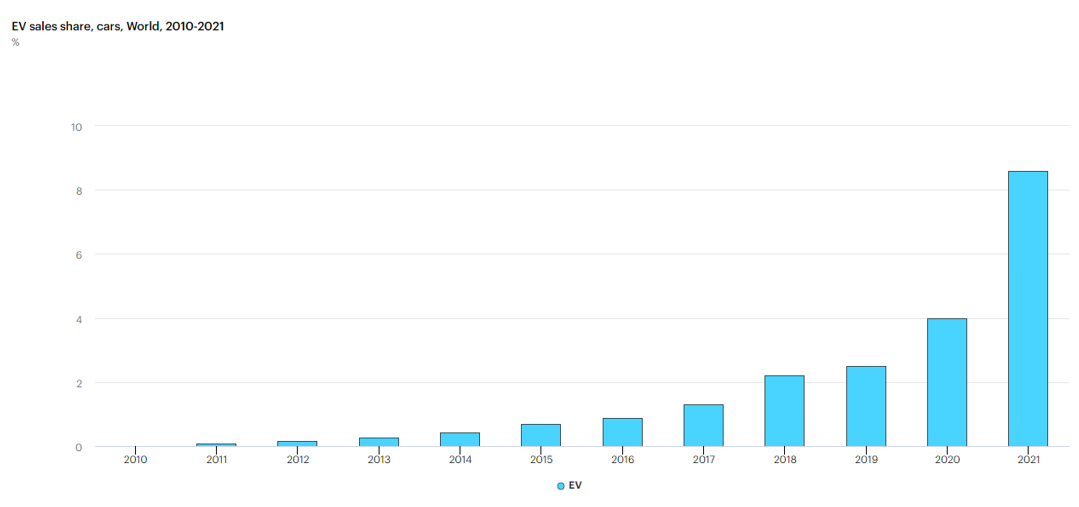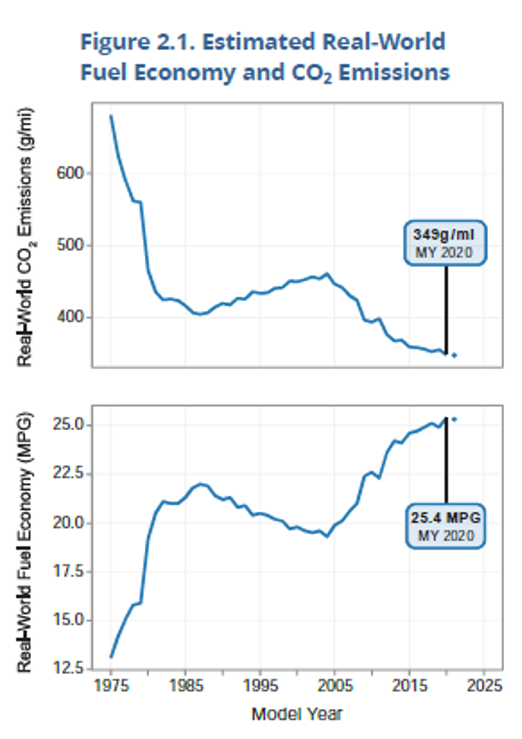
ESG: Auto Manufacturers Focus on Carbon Transition
How auto manufacturers are developing strategies for improved ESG ratings
Over the past several years, auto manufacturers have been increasingly focused on reducing carbon emissions via improving vehicle fuel efficiency and transitioning their product lines to fully electric vehicles. This increasing focus isn’t unfounded: according to the International Energy Agency (IEA), the transportation sector accounted for 37% of global CO2 emissions in 2021. Accordingly, a broad array of regulators have pushed for more fuel-efficient vehicles. This ranges from the global alliance reached under the Paris Agreement to the state of California banning sales of gas power vehicles by 2035, both having the ultimate goal of significantly reducing carbon emissions. Similarly, consumers have driven this push by increasing awareness of the effects of climate change on the environment and adopting hybrid and electric vehicles at a steady pace. According to the IEA, the global share of electric vehicles sales has risen from approximately 2% in 2018 to 9% in 2021, and there are realistic hopes of it reaching 30% by 2030.

Source: International Energy Agency
From 2015 to 2020, the fuel economy of US vehicles has improved from 24.6 mpg to 25.4 mpg, which has translated to a reduction from 360g/mi to 349g/mi1 in CO2 emissions. To further achieve a CO2 emission reduction, the electrification of vehicle fleets has been the primary avenue of automakers. The Automotive Industry in the Era of Sustainability Report estimates that the electrification of vehicles reduces their lifetime CO2 emissions by 37%. European regulators, under the Fit for 55 plan, have set CO2 emission targets for vehicle fleets of 95 g/km, with a goal of reducing CO2 emissions by 55% by 2030 from 2021 levels. Along with regulatory standards, incentives in the US have supported the transition to EVs. In the US, the Inflation Reduction Act extends a subsidy of $7,500 to consumers for certain types of electric vehicles and hybrids, while incentivizing manufacturers to build factories and foster local US supply chains.

Source: Environmental Protection Agency
The EPA estimates that the fuel economy of electric vehicle fleets has increased by almost 20% to just under 120 miles per gallon of gas equivalent from model years 2011 to 20202 . A key backbone to this improvement has been battery technology. Falling costs and improvements to energy density makes EVs more profitable for automakers, while relieving consumer concerns of range anxiety and recharging frequency. The mileage range of EVs has increased from under 100 miles in 2011 to 400+ miles in 2022. Further technological improvements are estimated to tip the balance of affordability and profitability towards EVs in the near future. Additional fuel efficiency gains of at least 10%3 can be achieved through autonomous driving by optimizing driving tendencies, improving routes taken by drivers, reducing traffic and accidents, and platooning vehicles to increase road capacity. Extensive capital expenditures and R&D resources will have to be poured into these ventures, but manufacturers are determined to reach the goal of lower emissions.
To fully achieve near-zero carbon emissions, manufacturers will need to work towards a circular economy that fully reuses vehicle parts from disposed vehicles, extends and repurposes the life of batteries, sources materials in an environmentally responsible manner, and integrates EV charging stations that run on renewable energy. For example, remanufactured engines have the potential to reduce carbon emissions by 73% to 87% compared to newly manufactured engines4 . In addition, remanufactured vehicles parts could save 30% to 50% of costs while retaining similar levels of quality. Moreover, reusing materials such as lithium in the production of batteries could reduce harm to the environment while also alleviating supply chain disruptions for key components. According to a survey run by Capgemini Research Institute, 50% of manufacturing companies are deploying best practices to promote a circular economy.
Auto manufacturers have given a great amount of focus to achieve lower emissions with the help of regulatory bodies and consumer demand. The evaluation of automakers when it comes to ESG scoring is determined by its current and future vehicle line up of hybrid and electric cars, the efficiency of its fleet of vehicles, the investment in R&D to achieve autonomous driving and other technologies and establishing a comprehensive carbon transition strategy. Those with more established and achievable strategies are more likely to be viewed favorably by ESG evaluators and investors. The most successful ones should be able to balance the obsolescence of gas-powered vehicles and transition to fully electric without disrupting operational profitability.
1The 2021 EPA Automotive Trends Report
2The 2021 EPA Automotive Trends Report
3Near-Term Impacts of Automated Vehicle Technologies – June 2021 by Avi Mersky – American Council for Energy-Efficient Economy
4The Automotive Industry in the Era of Sustainability – Capgemini Research Institute
Please click here for disclosure information: Our research is for personal, non-commercial use only. You may not copy, distribute or modify content contained on this Website without prior written authorization from Capital Advisors Group. By viewing this Website and/or downloading its content, you agree to the Terms of Use & Privacy Policy.
